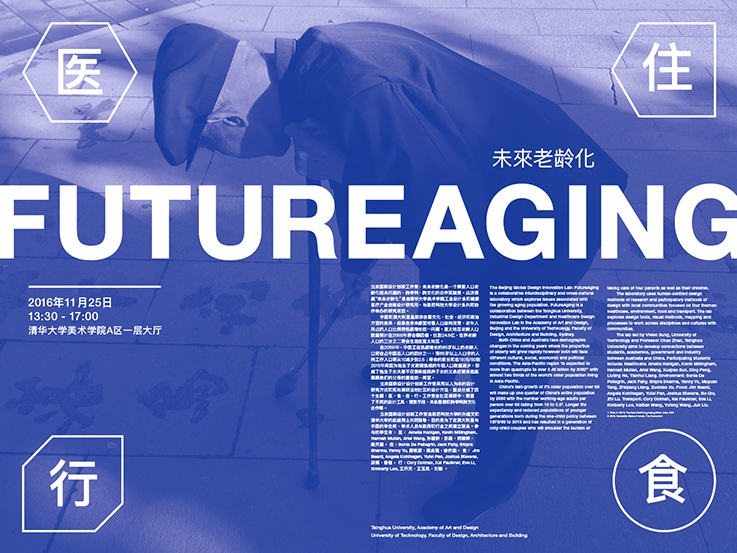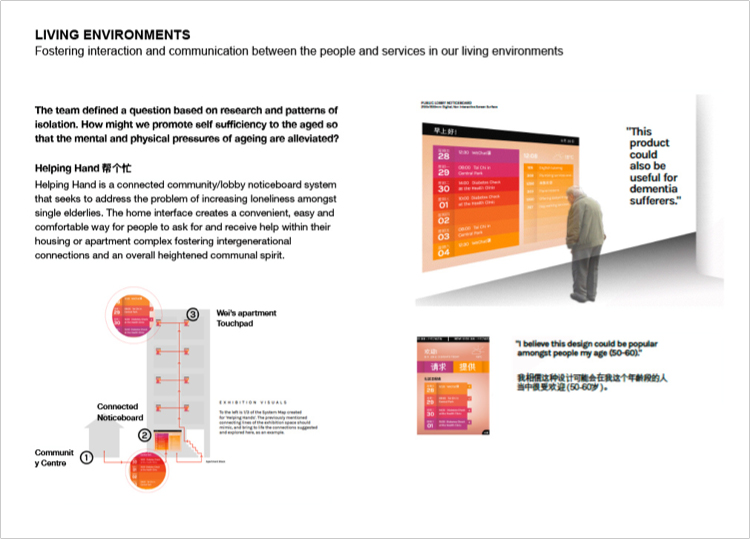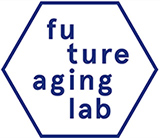
During November 2016, 16 interdisciplinary design students from the University of Technology travelled to Beijing to collaborate with 18 Masters of Industrial Design students at the Tsinghua University in Beijing for FutureAging Lab 1.
Prior to leaving, the students from UTS conducted secondary research on macro factors (social, cultural, economic, political and technological conditions) that would influence designing for elderly, best ageing practices around the world, and contemporary culture in China. Qualitative research was undertaken in the form of contextual user interviews with elderly in Australia viewed through the lens of the Quality of Life Profile (QOL), observational research and photo documentation of environments and elderly in Sydney suburbs high in Chinese residents. The Quality of Life Profile provides a measure for the determinants of health and well-being applicable to all people, advocated by the World Health Organisation (WHO).
Tsinghua University post-graduate students conducted design research using a variety of design research methods comparing elderly in urban and rural Beijing within four key themes: healthcare, environments, transport and food. A research plan was developed which included a literary review, contextual user interviews, observational research, photo documentation and questionnaires.
The brief invited students to engage in qualitative research in the field on four key themes – healthcare, living environments, transport and food and respond to the challenges and needs uncovered through research with ageing communities, families, stakeholders and experts. The brief involved defining a problem area within the theme and to design an integrated system of solutions to improve the quality of life of elderly or those close to them. The system could include products, services, wearables or campaigns.
In China, the students immersed in field research and ethnography was conducted with elderly, family members, carers, nurses and expert stakeholders. This builds an understanding of the local context and users pain points, unmet needs, hopes and dreams. The research included user interviews, observation, cultural probes and questionnaires and further secondary research. The data collected from the field research was then synthesised through a variety of design methods, visual mapping and analysis.




